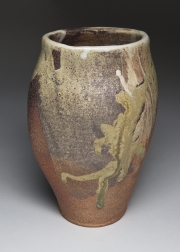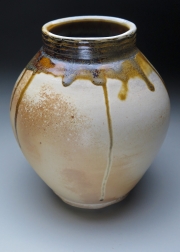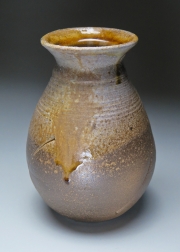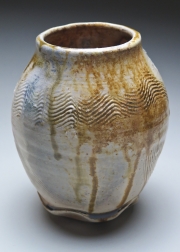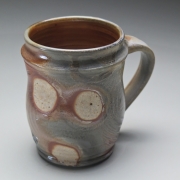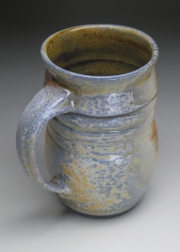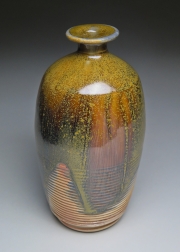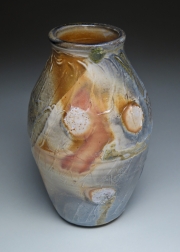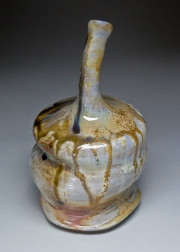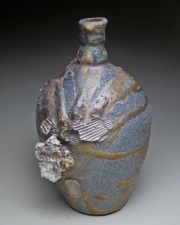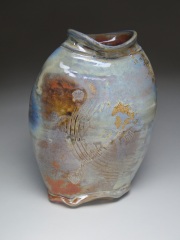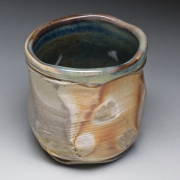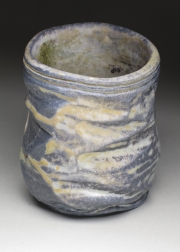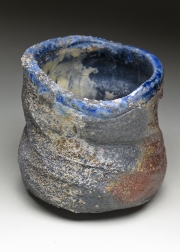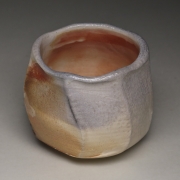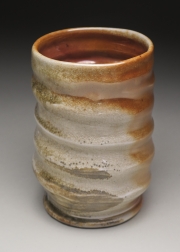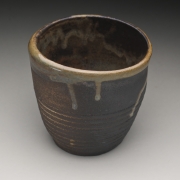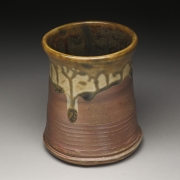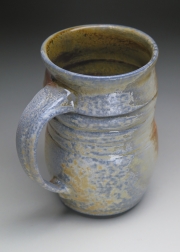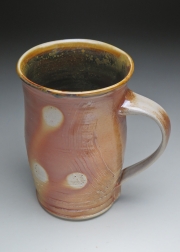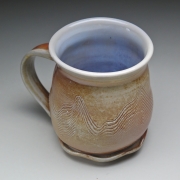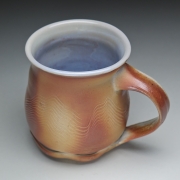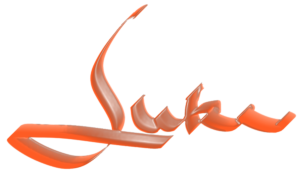Wood-Fired
Wood firing is an exciting process that usually involves a team of people working as a community to fire the kiln. The ware is set on wads or shells or sometimes rice hulls so that the melted ash from the firing does not glaze the ware to the shelves. Loading the kiln is a time-consuming process. Each piece must be wadded and carefully placed in the kiln so that the flames will swirl around the pieces as they flow toward the outlet. Firing usually involves fairly constant stoking of the firebox, keeping a good supply of split wood available, and carefully monitoring and adjusting numerous aspects of the firing. Wood-firing is an art, the kiln is manned around the clock (usually in shifts), and some kilns are fired for five days or more. Most wood-fired kilns are built on site and are quite expensive. Given this expense and the vast amount of labor and the high cost of the fuel (our train kiln will hold 200-400 pieces and uses two cords of wood), wood firing is comparatively rare.
Wood-Firing Challenges
Wood for thousands of years was the main source of fuel for firing ceramics. Now electricity, propane, and natural gas are often used and are much less expensive and time-consuming. Wood-firing has become a niche and finding a place to participate in this dying art has become more challenging and adds significant environmental concerns. It is not unusual, given the complexity involved, for a firing to produce inferior results often affecting hundreds of pieces of ware. The difficulty is further compounded by the fact that effective atmospheric firings require a great deal of expertise that grows with experience. It is precisely these challenges that make this type of firing intriguing to me and that add to the relative rarity of the pieces.
Featured Image
“Burnt Sugar” is the piece shown at the top of this page was wood-fired in the Don Reitz train kiln. Except for the lip and a
Train Kiln
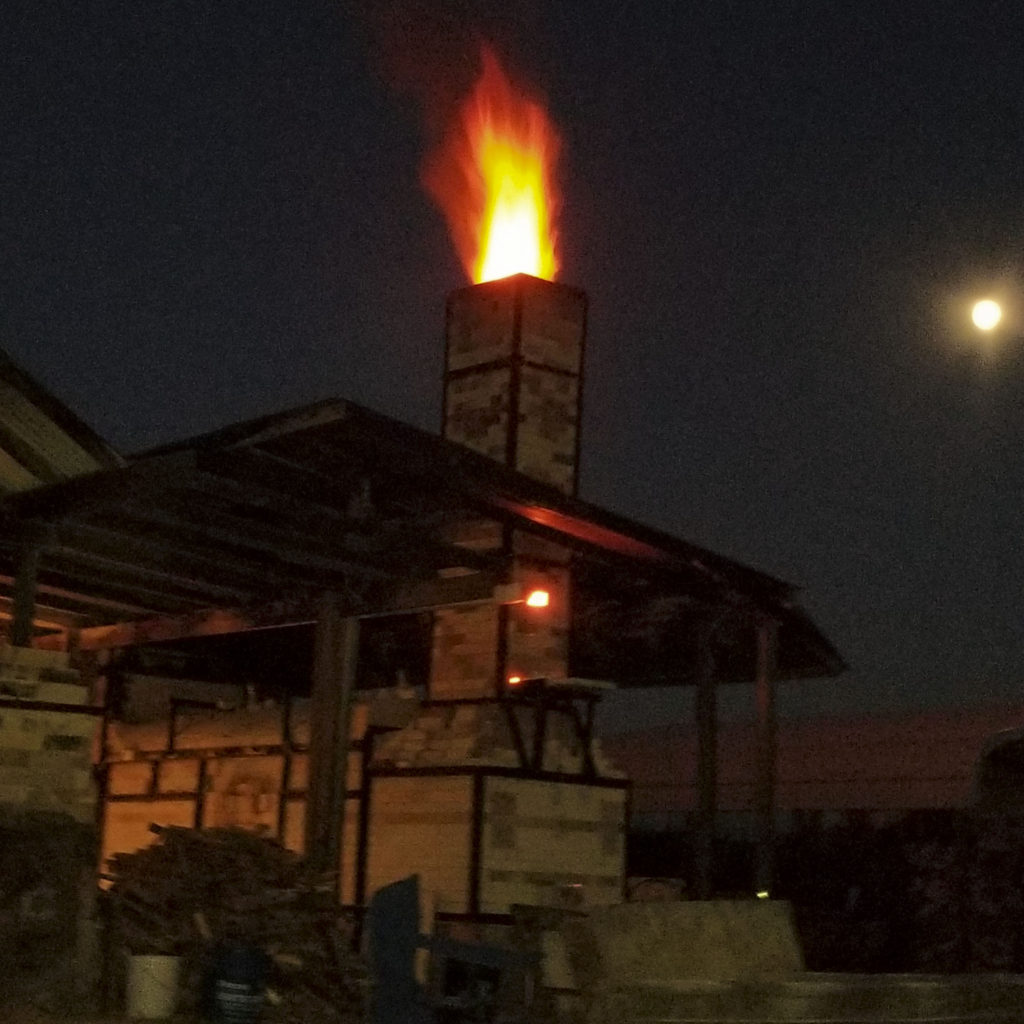
At the Reitz Ranch in Clarkdale, Arizona we often use the wood-fired train kiln which is shaped like a caboose and the firing chamber is about 15 feet long. Wood-firing in a kiln like this will often require close to 48 hours of continuous firing. We man the firing in six-hour shifts typically involving two or more people per shift The challenge is to bring the temperature up in a controlled manner and keep the temperature between the front and the back of the kiln close. The fire-box is at one end of the kiln and the flame travels the full length of the kiln and will then be shooting out of the “stack” once the kiln gets really hot assuming we got everything working properly. You can see the flames shooting out of the stack. To keep the flame and heat moving this long distance a side-stoke port is fed with smaller pieces of wood. This results in a large ash pile in the middle of the kiln. The featured image shows a piece that was submerged in this ash pile.
Why Wood-Fire?
Wood-firing is called an atmospheric firing. The atmosphere that flows through the kiln “paints” the ware. In the case of wood-firing, the ware is painted by flames and fly ash (ash particles resulting from the burning of the wood). Once the kiln becomes very hot, the fly ash from the firebox that flies around the kiln and deposits on the pieces melts and alters glazes as well as forming a natural ash glaze. The flames may cause the exposed clay surfaces to flash (brilliantly change colors). Often a flashing slip is used to enhance the flashing as well as to create certain colors. The featured image above demonstrates flashing and the subtleties that can result. This piece was fired on its side supported by wadding, and the circles show where the wads were placed. Notice the variations in the flashing as the flame moved around these wads.
The bottom line is that wood-fired pieces have a distinctive and often stunning look. Often people will try to imitate this look, but there is no substitute for the real thing!
Viewing my Wood-Fired Art
Some of my work that is currently available may be viewed at the Village Gallery in Sedona, Arizona. There are three large shows where I show my work including wood-fired pieces. My home studio/gallery in Sedona is open by appointment (if you are visiting Sedona come by), and also twice a year during the three-day SVAC Open Studio Tour (Spring and Fall). The Made in Clarkdale Artist Showcase is another show that attracts many visitors and I am grateful for the opportunity to show there (Reitz Ranch is my connection with Clarkdale).
